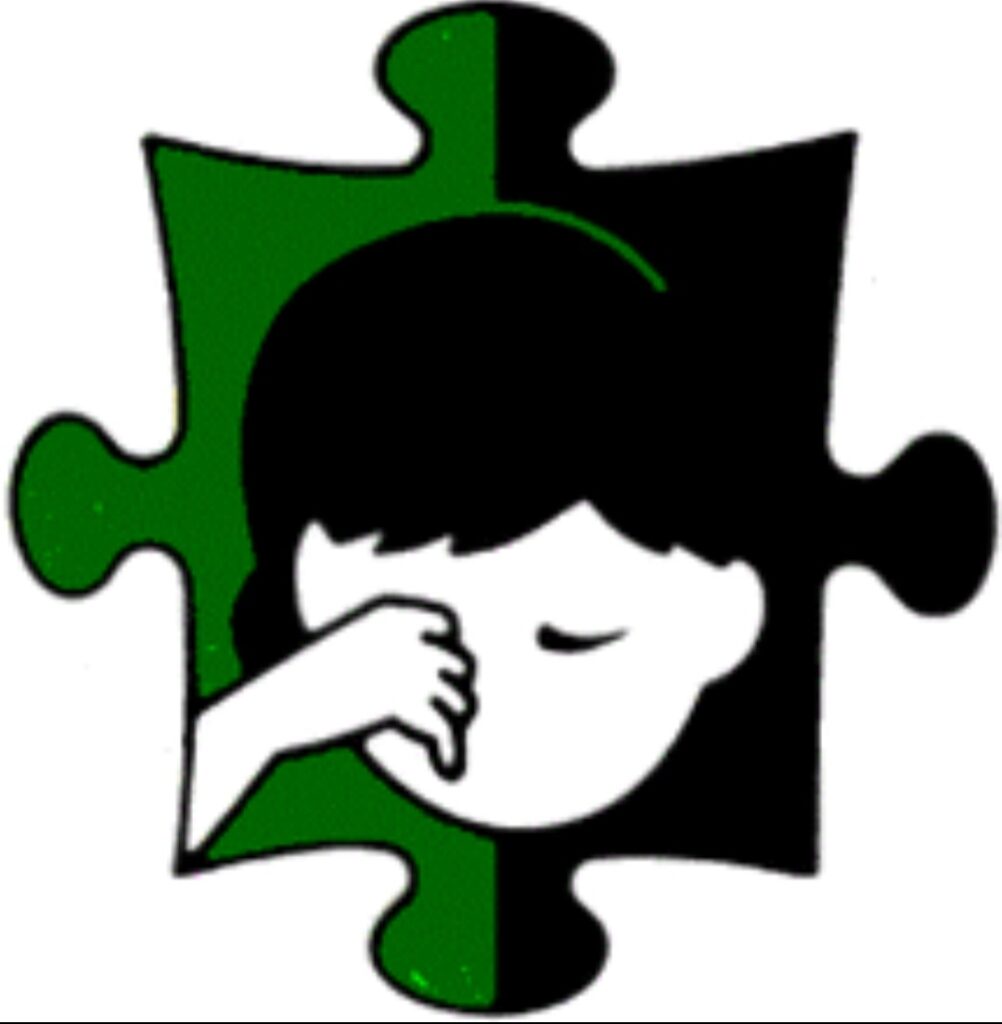If you are new to the world of neurodiversity you may be wondering why is autism a puzzle piece?
What does it mean and where did it come from?
Let’s investigate….
Autism and the puzzle piece symbol
Over the years, the autism community has adopted various symbols to represent their experiences and raise awareness about the condition.
One widely recognised symbol historically was the autism puzzle piece.
However, the use of this symbol has sparked controversy, with some deeming it offensive.
This article aims to explore why the puzzle piece symbol became associated with autism.
In addition we investigate why it has faced criticism and what symbol is now gaining prominence as an alternative.
The origins of the puzzle piece
The origins of the autism puzzle piece symbol can be traced back to the late 1960’s.
During this time the National Autistic Society (NAS) in the United Kingdom adopted it.
At the time, autism was still relatively misunderstood, and the puzzle piece was intended to reflect the complexity and mystery surrounding the condition.
It represented the idea that solving the puzzle of autism would lead to a greater understanding and acceptance.
The original design was of a crying child inside the puzzle piece.
This was supposed to represent the sadness from the burden that autism was considered to put on a child’s life.
It is worth noting that no-one who contributes to this site considers autism a burden on a child.
We are just digging into the the history of the symbol.

Why the controversy?
While the puzzle piece symbol was initially embraced by many, it has faced criticism in recent years.
Several concerns have been raised about its implications and the message it conveys.
Critics argue that the symbol reinforces the idea that autistic individuals are incomplete or missing something.
They believe it perpetuates a negative narrative that autism is a problem to be solved or fixed, rather than a natural variation of neurodiversity.
Additionally, the puzzle piece symbol has been associated with the notion of searching for a cure.
This perspective undermines the idea that autism is an integral part of a person’s identity and implies that being autistic is inherently undesirable.
Many autistic individuals and advocates argue for acceptance and support rather than a focus on trying to change who they are.
There have been various public criticisms of the puzzle piece by organisations such as Autistic Self Advocacy Network, citing many of the above reasons.
The utilisation and widespread recognition of the puzzle piece symbol posed another concern for certain neurodivergent individuals.
This was due to its association with Autism Speaks, a controversial non-profit organization.
Autism Speaks has faced criticism, with some characterising it as a hate group that aimed to eradicate autism.
It must be noted that the explicit mention of a “cure” was removed from its website in 2016.
Presently, Autism Speaks describes its mission as being dedicated to personalised healthcare, interventions, and supports.
However, the organisations past focus on seeking a cure has contributed to the unease surrounding the puzzle piece symbol for some neurodivergent individuals.
Do some people like it?
While the puzzle piece symbol has faced criticism within the autism community, it is worth noting that there are autistic individuals who resonate with and appreciate the symbol.
For some, the puzzle piece represents their personal journey of self-discovery.
Also it is a metaphor for the unique challenges they face as they navigate a sometimes difficult world.
They view the puzzle piece as a symbol of hope, acknowledging that autism can be complex and that further research and understanding are necessary.
These individuals might interpret the symbol as a reminder that society should strive to find solutions.
Also that clear support systems that enhance the lives of autistic people should be widespread.
Others have explained that a diagnosis of autism was indeed the missing puzzle piece in their journey of understanding.
For example in the same way that a diagnosis can be enlightening, it can be represented as a puzzle piece clicking into place.
It is essential to recognise and respect the diverse perspectives within the autism community.
We should understand that not everyone shares the same views on symbols and representation.
What is the newer symbol?
As an alternative to the puzzle piece symbol, the infinity symbol has gained prominence within the autism community.
The infinity symbol represents the infinite diversity and complexity of individuals on the autism spectrum.
It emphasises the importance of embracing neurodiversity and recognising the unique strengths and abilities that autistic individuals possess.
The infinity symbol also signifies the ongoing journey of self-discovery, acceptance, and understanding that autistic individuals and their families undertake.
It promotes a shift in focus from trying to “solve the puzzle” to celebrating the diverse perspectives and contributions of individuals with autism.

Conclusion – Why is autism a puzzle piece?
Symbols hold great power in shaping public perception and understanding of complex issues such as autism.
While the puzzle piece symbol initially aimed to raise awareness about autism, its association with negative connotations and a search for a cure has led to criticism from within the autism community.
In recent years, the infinity symbol has emerged as an alternative symbol that reflects a more inclusive and accepting perspective.
It highlights the importance of celebrating neurodiversity and acknowledging the unique strengths and abilities of autistic individuals.
Ultimately, the choice of symbol should be driven by the voices and preferences of the autistic community itself.
It is crucial to listen to their perspectives and experiences to ensure that symbols and representations align with their values.
Ultimately leading to and promoting a culture of acceptance, understanding, and support.

